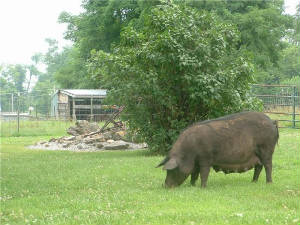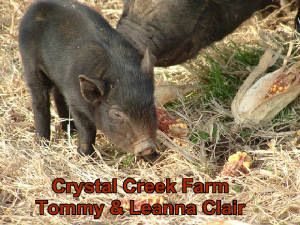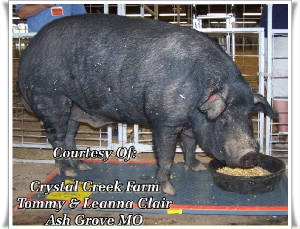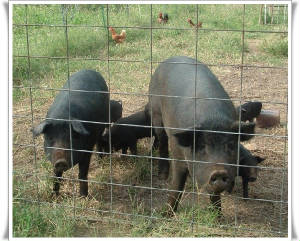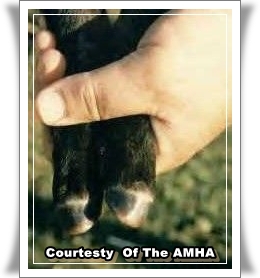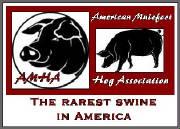

 |
|
|
||||||||||
|
What sets mulefoot hogs apart from all the other American pigs is their type. You see, back in the day pigs were classified
by their type - rangy, meat type or lard type. Lard type pigs had short legs and short bodies and could be made incredibly
fat, back when lard was still used for all sorts of industrial processes as well as being the dominant cooking oil. Meat type
hogs fell somewhere in the middle and were selected for large hams and shoulders. The Mulefoot breed is the only full size American lard type hog left. A few links: The American Mulefoot Hog Association |
|
|
||||||||
|
This so-called Pig Pageant was sponsored by the American Livestock Breeds Conservancy, Humane Farm Animal Care, Slow Food U.S.A. , and Ayrshire Farm, an eclectic group of organizations and individuals committed to saving heritage genetics, promoting
a saner animal production paradigm and bringing flavor back to the table. The pig breeds in question evolved to fit various regional and farming practices and some are known for producing plenty
of lard, while others are naturally lean. For example, the Tamworth is a lean grazing pig shaped to produce plenty of bacon,
while the Ossabaw Island is a feral breed that stores large amounts of fat for winter survival. 
Crystal Creek Farm * Tommy & Leanna Clair * Ash Grove MO * US * 417-751-2505 * tlc_homesteaders@earthlink.net
|
||



